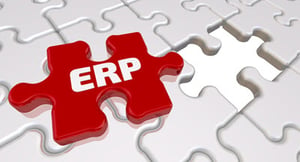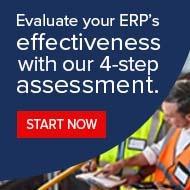 Like it or not, system migrations often come with the territory in today’s rapidly evolving technology landscape. Often they are perceived of as a necessary evil. Nobody wants to rock a steady boat – things are working now and a migration just opens the door for a range of risks and unknowns.
Like it or not, system migrations often come with the territory in today’s rapidly evolving technology landscape. Often they are perceived of as a necessary evil. Nobody wants to rock a steady boat – things are working now and a migration just opens the door for a range of risks and unknowns.
The complex nature of migration projects, coupled with the inherent uncertainty, gives rise to certain common worries for all stakeholders involved. We’re here to address those uncertainties head-on. Following are the top four most common migration concerns for organizations and how to avoid them.
#1: Costs - Time, Money, Resources
Given the complexity of the systems involved, migration projects demand significant investments in terms of time, money and resources. For planned, and especially for unplanned migrations, there are worries about:
-
What are the other costs involved, besides purchasing the new technology? These could include training people for the new environment, new maintenance schedules, and any infrastructure enhancements.
-
Which is more cost effective – having the in-house IT team perform the migration of hiring a specialized team? Do we have the budget for that?
-
What’s the opportunity cost? How much revenue will be lost in case there’s unexpected downtime during the migration?
-
Will internal resources will be tied up in the migration process? Do I need additional resources in place?
-
Are my organization’s business requirements clearly defined? Which ones are mission-critical – and what will they cost?
How to Avoid It: Careful Project Management, Starting With Business Requirements
A migration assessment can make the complete system migration smooth and minimally disruptive. First and foremost, business requirements must be clearly understood before your migration plans are in motion.
Once those requirements are clearly defined, make sure you have the appropriate project management resources in place, then build out from there. This approach keeps your budget on track and helps prevent scope creep. Too often, overly optimistic views on time, budget and scope are quickly blown out of the water once plans are set into motion.
A migration assessment can also help companies spot opportunities to minimize costs in certain aspects. Part of this includes asking, “What’s the cost and risks of NOT performing the system migration?” Not upgrading to improved systems on time can lead to severe productivity issues down the line. And postponing the migration can also mean having to do it at a much higher cost, and possibly struggle through a more complex process later on.
#2: Technical Concerns
The most common worry centers around the technical feasibility of the migration project, and how it impacts current operation. Most questions are around:
Disruption: Will my applications experience downtime during the migration? How soon can we get back to full productivity after the migration? On top of this, companies also worry if they have to put new processes in place to manage applications on the new system.
Infrastructure: Introducing a new technology or platform into the existing IT infrastructure raises questions around whether it can be seamlessly integrated. Additionally, there are concerns about whether the target system will be capable of handling the kind of workload that the firm requires.
Data Loss: Will all the data - core, metadata, functionality, and integrations to other data sources – be effectively migrated to the new system?
How to Avoid Them: Migration Assessment
All of these are valid questions for a stakeholder. You don’t want to invest time, money and resources into a system migration only for it to fail. And the best way to avoid all of this is to carry out a detailed migration assessment. This might include:
-
Perform an in-depth comparison of the current and target systems, to understand how they are similar or different, and spot any possible incompatibilities
-
Make sure to compare production environments, databases, etc. to identify if any upgrades are required for a successful migration
-
Map out how applications will be migrated and managed in the new system
-
Have test scripts in place to thoroughly check all functionalities once migration is complete.
Knowing as much as possible about the target system, and planning the move in advance helps avoid a lot of the technical worries. There might still be certain things that don’t go right in the first instance, but a migration assessment give a good idea of what to expect during and after the migration.
#3: Changing Processes and Training Resources
System migration often means a significant change in technology, forcing the teams to change the way they do their jobs. This means companies worry about:
-
The cost of training all relevant personnel on the new technology, especially if it has a steep learning curve
-
The possible disruption caused as resources are pulled away from current tasks to take part in training sessions
#4: Data Validity Concerns
Migration involves several risks related to enterprise data security and validity. The longer the migration period, greater would be the risk involved. Data corruption, loss, and divergence are common concerns since there will be two systems running side by side. And if something goes wrong in the migration, will there be risks that cannot be reversed?
For both these concerns, advance preparation is the best solution. Plan carefully for staff learning curves and process changes, making sure the migration doesn’t coincide with other critical projects that will be affected. Also map out possible data validity challenges – being cognizant of them during the migration process can help ensure you steer clear of irreversible accidents.
We can’t emphasize enough that the key to a successful migration starts with careful planning.

